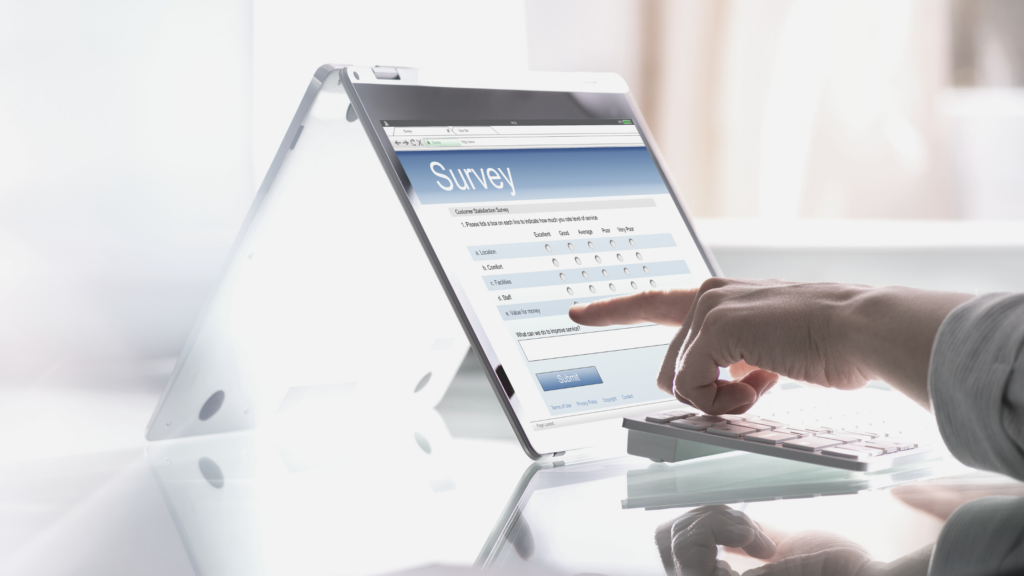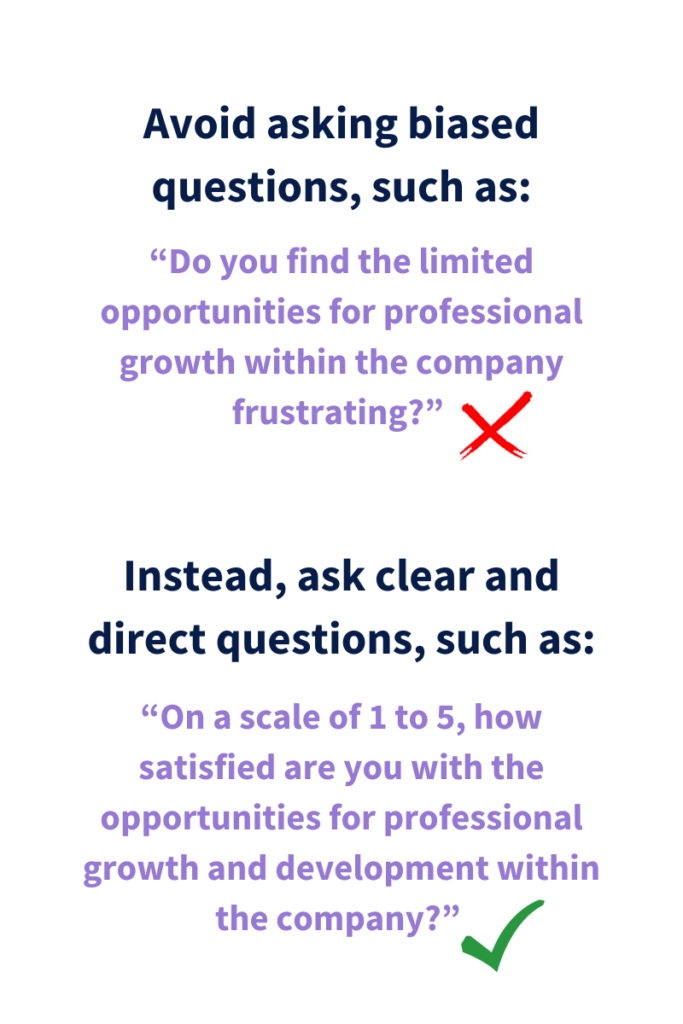Employee engagement is a crucial driver of organizational success.
Businesses with highly engaged employees experience an 81% reduction in absenteeism and a 14% boost in productivity. They are also less likely to leave their job, among other numerous benefits.
One way for employers to gain insight into their employees’ perceptions, attitudes, and experiences is by conducting employee engagement surveys.
These surveys, when thoughtfully designed, offer employees a confidential and secure platform to voice their concerns and frustrations related to their workplace. The data gathered from employee engagement surveys provides HR and management with the information they need to make well-informed decisions on how to enhance employee engagement levels.
In this article, we will explore best practices that HR professionals can follow to design and administer effective engagement surveys and how to harness those results to increase employee engagement and drive success within the organization.
Best Practices for Designing Effective Employee Engagement Surveys
The process of designing impactful employee engagement surveys requires careful planning and consideration, recognizing that each organization’s approach will differ based on variables such as business size, industry, workforce demographics, and company culture.
When designing an employee survey, here are some general best practices to keep in mind:
Determine Your Purpose
Before designing a survey, it’s important to define clear objectives. Are you trying to identify areas for improvement, measure the impact of recent changes, or gauge overall employee satisfaction? Having well-defined objectives at the outset will help guide your survey design and ensure that the data you collect is pertinent and actionable.
Choose the Right Survey Method
There are a multitude of survey tools available to employers today, but choosing the right one for your business is crucial. Decide whether an online survey, a paper-based survey, or a combination of both best aligns with your workforce’s needs. Consider factors like accessibility, anonymity, and ease of data collection when deciding how you will distribute your surveys. Ensure the survey is accessible to all employees, including those with disabilities, remote workers, and part-time employees, and that it functions seamlessly across all devices, including computers, phones, and tablets.
Design Thoughtful Questions
Design questions that are clear, concise, and relevant to your defined objectives. Use a mix of open-ended and close-ended questions to capture both quantitative and qualitative data. Be vigilant in avoiding biased questions that might skew results (see examples below). Aim to design the survey so that it can be completed by the majority of employees within a 10 to 15-minute timeframe. Surveys that take longer may lead to survey fatigue, decreased response rates, or less reliable data.
Best Practices for Administering Employee Engagement Surveys for Results
Similar to the process of survey design, the strategy for administering surveys plays an important role in encouraging participation and obtaining actionable insights. To maximize survey administration, follow these steps:
Communicate Your Purpose
Clearly communicate the purpose of the survey to your employees. Inform them about the survey well in advance, explaining why their feedback is essential, how the data will be used, and how it will benefit both them and the organization. Reassure them that their responses will remain confidential and anonymous. This level of transparency helps to foster trust and encourages active participation.
Choose the Right Timing
Timing is an important consideration. Select an appropriate time within your organization’s operating calendar to conduct the survey. Avoid launching it during peak work weeks or particularly stressful periods for the organization. Ensure employees have ample time to complete the survey, while also setting a firm deadline to ensure timely responses. Typically, allotting two weeks for employees to complete the survey is suitable, although this may vary depending on the organization. Giving employees too much time may result in them forgetting to respond while giving them too little time could lead to rushed and less reliable responses.
Send Follow-Up Reminders
Sending gentle reminders to non-responders can significantly increase participation rates. Recognize that not all employees will respond to the survey. Generally, a participation rate benchmark of 70% to 80% is common across various industries and organization sizes. Lower rates, ranging from 40% to 70%, may be observed when employees are less engaged, while higher levels of participation are typical when employees are highly engaged. Understand your organization’s unique benchmark and strive to enhance response rates in future surveys.
Best Practices for Harnessing Employee Engagement Survey Results
Taking action on the findings of employee engagement surveys is a pivotal phase of the process. Once the survey responses are collected, the path to meaningful improvements in employee satisfaction and workplace culture can begin. Here are some best practices to guide you:
Analyze The Data
Once you’ve collected your survey results, analyze the data carefully. Look for trends, patterns, and areas that require immediate attention. Common pain points often revolve around communication, leadership, career development, and work-life balance.
Communicate Results and Track Progress
Share the survey results with stakeholders and employees. Outline the actions that will be taken in response to their feedback, which helps underscore the significance of their input and assures them that their voices are heard.
Develop Strategic Action Plans
Collaborate with key team members to formulate action plans designed to address issues and opportunities for improvement. When appropriate, involve employees in this process by organizing focus groups or workshops to gather their input and ideas. These action plans should clearly define the steps, responsibilities, and timelines for implementing changes and improvements.
Feedback and Communication Loop
Keep employees informed about the progress of initiatives and changes derived from the survey data. Maintain an open feedback loop, encouraging employees to provide ongoing input and voice any concerns they may have. Create channels for ongoing feedback, such as suggestion boxes, open forums, or regular meetings with management.
Repeat Surveys
Conduct follow-up (pulse) surveys to assess the impact of the changes and improvements implemented based on insights from the engagement survey. This helps gauge progress and helps pinpoint any new areas that may require attention. In addition, regularly conducting employee engagement surveys, whether on an annual, semi-annual, or more frequent basis if needed, will help track important shifts in employee satisfaction.
Employee engagement surveys are a powerful tool for HR professionals to understand the pulse of their workforce.
By following these best practices, HR teams can design and implement effective surveys that lead to improved engagement, increased job satisfaction, and ultimately, better organizational performance.
Remember that employee engagement is an ongoing journey, and surveys should be a recurring part of the HR strategy to ensure continuous improvement and a thriving workplace culture.
XpanseHR Can Help
At XpanseHR, we offer a diverse array of comprehensive solutions designed to enhance engagement and cultivate a positive workplace environment. From our customized employee engagement surveys to our specialized training and development programs and performance management solutions, we provide the tools and guidance you need to create an environment that fosters employee engagement, satisfaction, and loyalty.
To take the first step toward creating a more engaged and productive workforce, contact us today:




